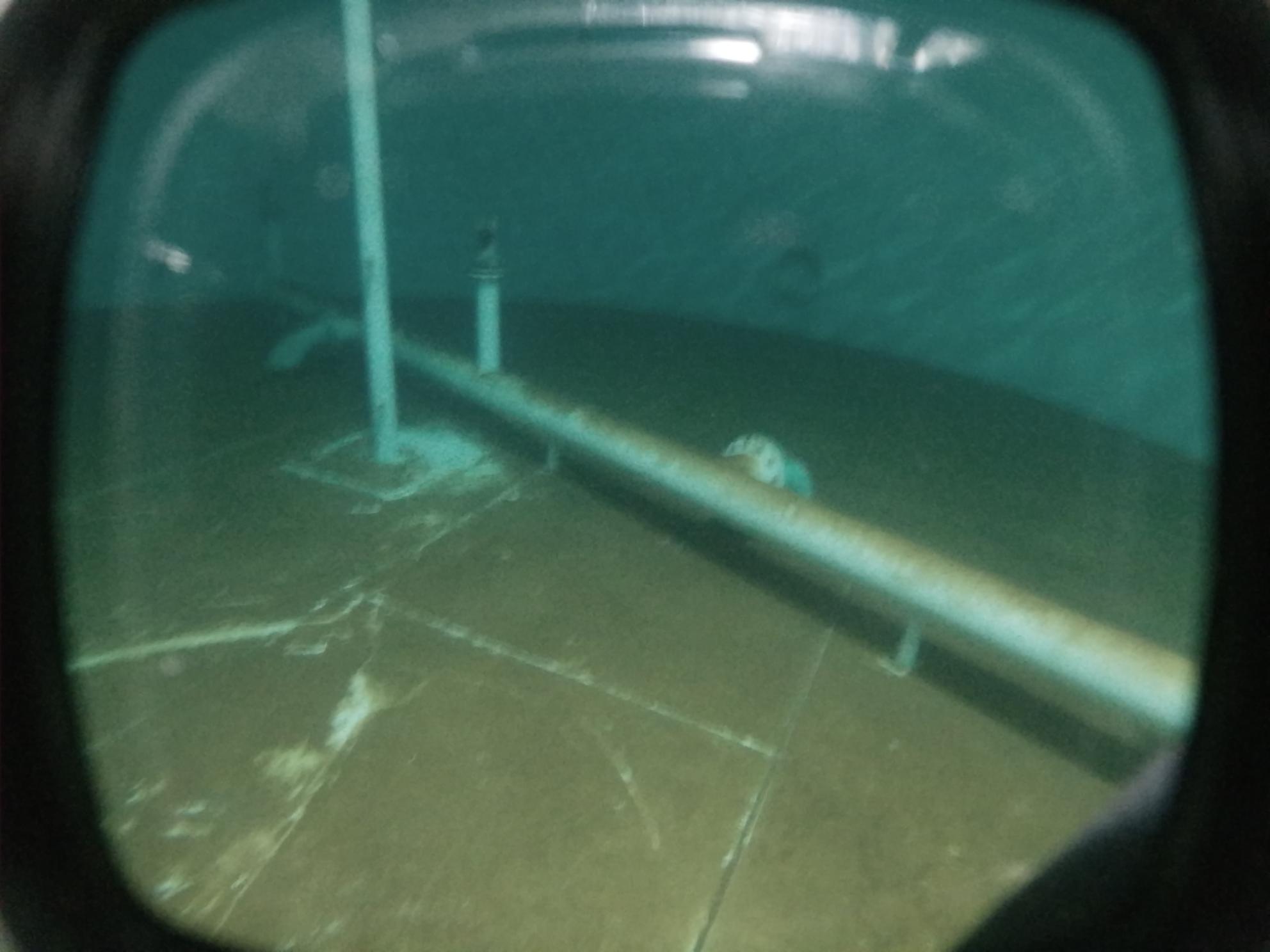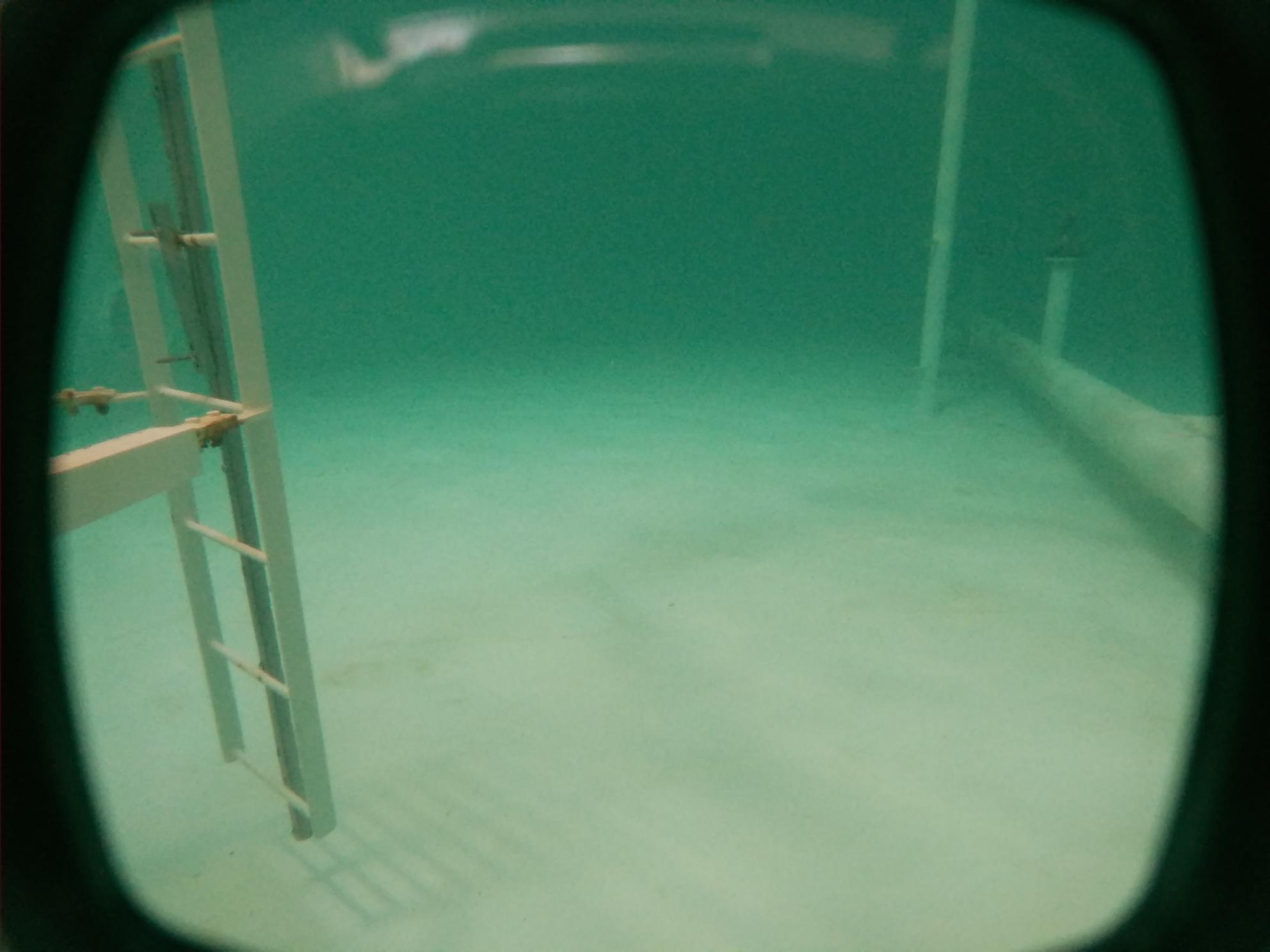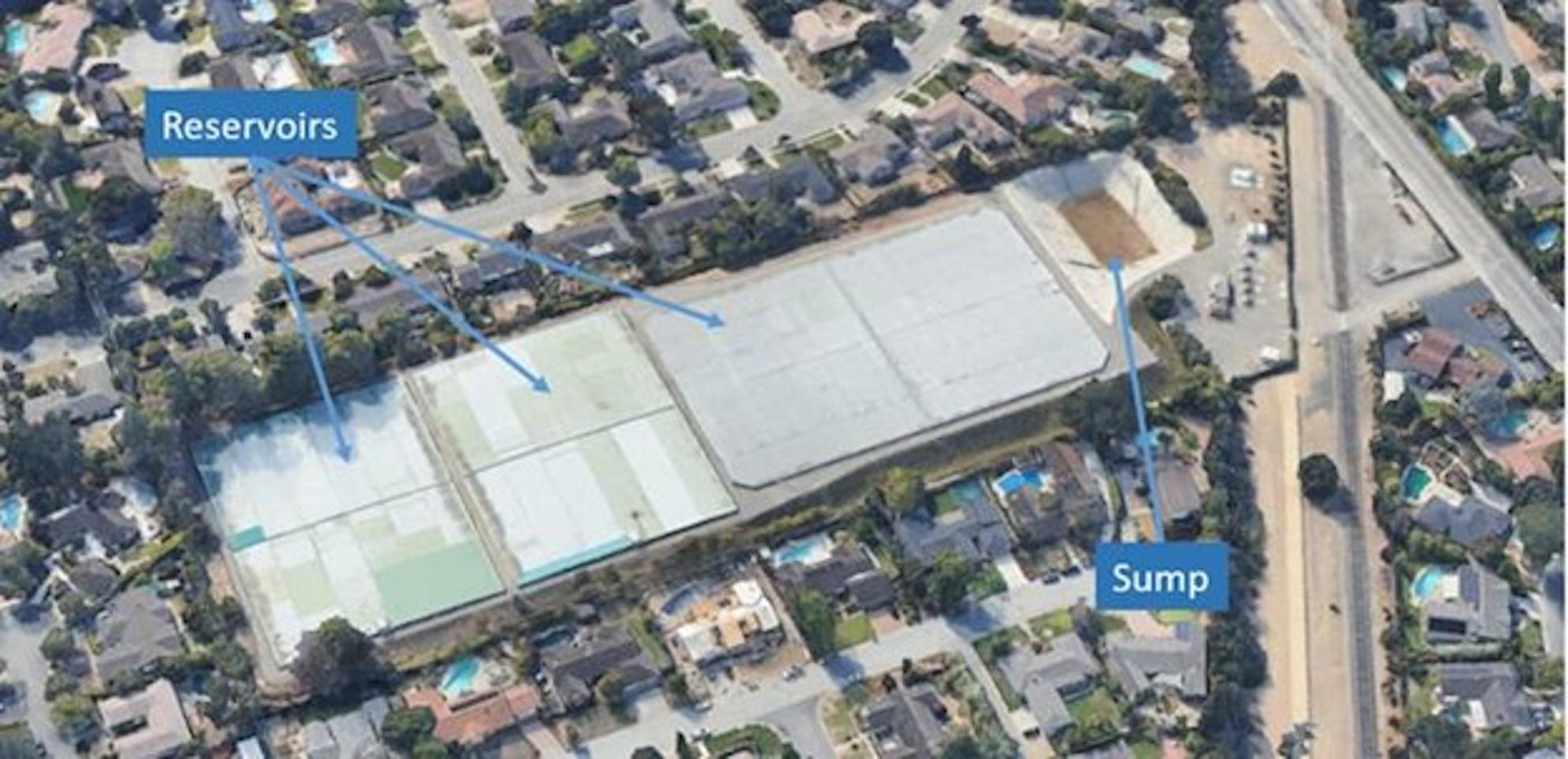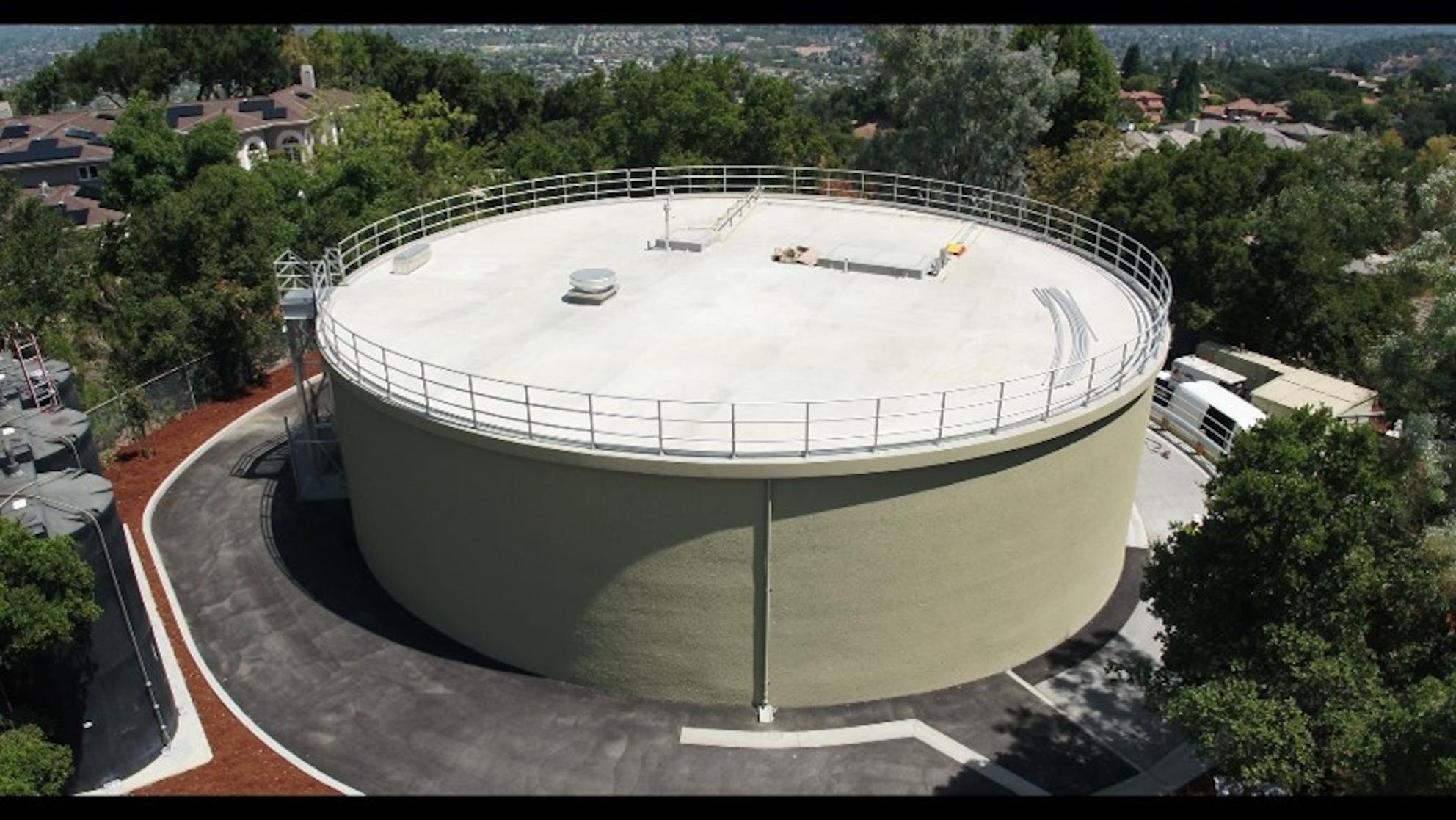Ever wonder how to clean a tank that holds 20 million gallons of water? Very carefully!
SJW regulatory maintains its 96 tanks and reservoirs that dot our 140 square mile service area. But did you ever know how and why?
Tank and reservoir cleaning programs are essential for water utilities to provide clean, safe, high quality drinking water. Tank cleaning removes sediment which can harbor microbial growth, assists with keeping a stable disinfectant residual, controls taste and odor, and allows for a thorough inspection to determine the overall health of the tank.
San Jose Water follows the American Water Works Association (AWWA) C652-11 recommendations for safe cleaning and disinfecting practices—typically performing routine tank cleanings every 3-5 years in approximately 96 treated water reservoirs.
Tank cleanings and inspections can be performed in multiple ways. We can take tanks offline and perform a dry cleaning; we can use dive contractors that are completely disinfected to clean the tank online; and, in some cases, we use a remotely operated vehicle (ROV). Determining which type of cleaning to use is subject to the current condition of the distribution system, the manner in which are operating, the size of the tank, and cost.


We take great pride in our water conservation efforts and environmental stewardship when we perform these cleanings. When it is determined that a tank needs to be taken offline for a routine cleaning, the Operations Team will bring the tank’s usage level down, meaning we stop supplying the tank with water and let consumer demand bring the level down naturally. This process ensures that the least amount of water will be wasted prior to cleaning.
The small amount of remaining water is then pumped out and dechlorinated, using a filtration unit that captures sediment prior to entering the local City’s storm drain system.
The use of these filters helps prevent overloading drain systems with sediment. The dechlorination is used to protect fish and wildlife. After a tank is cleaned, it is thoroughly disinfected and not brought back online until it successfully passes a bacteriological sample.
Unfortunately, regardless of the appropriate cleaning process selected, there will always be minimal water discharge that takes place. Our tank cleaning program takes this into consideration for all of our cleanings. We use the tools and resources available to us in order to minimize waste that could be generated, and are always looking for new and innovative ways to keep our operation efficient.
Q&A
Q: Why is any water wasted?
A: The remaining volume of water is discharged prior to a dry cleaning to prevent air or sediment from entering the distribution system. During a dive or ROV cleaning, the tank is kept online and is cleaned using a strong suction pump which removes sediment and water at the same time.
Q: What can you do to not allow water to run in the street?
A: The discharge location is site specific. While we don’t want water to run into the street, it is sometimes the most practical solution based on a City’s storm drain system.
Some of our sites allow water to stay on location without discharging off the property. A percolation basin, sometimes called a sump, is a large basin with a permeable bottom that allows the water to gradually absorb into the ground and recharge the acquifer. If there is a percolation basin at the tank site that needs cleaning, we will utilize the percolation basin and allow the discharged water to percolate back into the ground for beneficial reuse.

Q: How much water is lost when a tank is emptied for cleaning?
A: It is the minimum amount for that specific tank design and size. Our system tanks range from 0.1 MG–20 MG. For example, when we need to pump and filter the final foot of a tank that is 100,000 gallons, we would need to discharge 5,000 gallons. Approximately, 95% of the water would be captured and used prior to discharging.
Q: Why are you performing cleanings during a drought?
A: As mentioned, tank cleanings are critical to providing high quality water. We are committed to providing reliable, life sustaining water to our communities. Cleaning and maintaining our infrastructure is part of this process.
